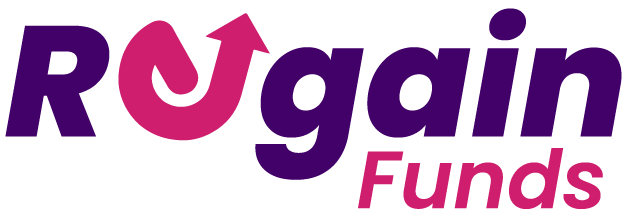Shield Yourself from Scams: Top Strategies for Preventing Credit Card Fraud

In our digital age, online shopping has become a convenient go-to for many. Yet, with the rise of e-commerce comes the increasing threat of credit card fraud. Understanding how to protect yourself is crucial. This blog will arm you with the top strategies to prevent credit card fraud, ensuring your online shopping experience remains safe and secure.
Introduction to the Growing Threat of Credit Card Fraud in E-commerce
The convenience of online shopping has revolutionized the way we purchase goods and services. But this convenience comes with a price—an increased risk of credit card fraud. According to recent statistics, credit card fraud cost consumers over $27 billion worldwide in 2020, and the number continues to rise each year.
For online shoppers, this means being vigilant and proactive in protecting their financial information. In this blog post, we’ll explore the growing threat of credit card fraud, how it happens, and the top strategies you can use to safeguard your finances.
Understanding How Credit Card Fraud Happens
Before we jump into the strategies, it’s essential to understand how credit card fraud occurs. Fraudsters use various methods to steal credit card information, including phishing scams, data breaches, and skimming devices.
Phishing scams often involve deceptive emails or websites that trick users into providing their credit card details. Data breaches occur when hackers gain unauthorized access to a company’s database, exposing thousands of credit card numbers. Skimming devices, on the other hand, are used to capture card information during a legitimate transaction, often at ATMs or gas stations.
Knowing these methods can help you recognize and avoid potential threats. By staying informed, you can take the necessary precautions to protect your credit card information.
Secure Payment Gateways
One of the most effective ways to prevent credit card fraud is to use secure payment gateways. These gateways encrypt your credit card information, making it difficult for hackers to intercept and steal your data.
When shopping online, always look for websites that use HTTPS rather than HTTP. The “S” stands for secure, indicating that the website uses encryption to protect your information. Additionally, consider using payment services like PayPal or Apple Pay, which offer an extra layer of security.
By choosing secure payment gateways, you can significantly reduce the risk of credit card fraud.
Implementing Two-Factor Authentication
Two-factor authentication (2FA) adds an extra layer of security to your online accounts. With 2FA, you’ll need to provide two forms of identification before you can access your account—typically something you know (like a password) and something you have (like a smartphone).
Many online retailers and financial institutions offer 2FA as an option. Enabling this feature can help protect your account even if your password is compromised.
Setting up 2FA is usually straightforward and can be done in your account settings. It’s a simple but powerful tool for preventing credit card fraud.
Regularly Updating Security Software
Keeping your security software up-to-date is another essential strategy for preventing credit card fraud. Outdated software can have vulnerabilities that hackers can exploit to access your personal information.
Make sure your antivirus and anti-malware software are always updated to the latest versions. Enable automatic updates if possible, so you don’t have to worry about missing crucial security patches.
Updating your security software regularly can help protect your computer from viruses, malware, and other threats that can lead to credit card fraud.
Monitoring and Reporting Suspicious Activity
Regularly monitoring your credit card statements and online accounts can help you detect and report suspicious activity early. Look for unfamiliar transactions or charges that you didn’t authorize.
If you notice anything suspicious, contact your credit card issuer immediately. Most companies have fraud detection departments that can investigate and resolve potential issues. Reporting suspicious activity promptly can prevent further damage and help recover any lost funds.
Being proactive in monitoring your accounts is a key step in preventing credit card fraud.
The Role of Customer Education in Fraud Prevention
Educating yourself and others about credit card fraud is one of the best ways to prevent it. Many people fall victim to fraud simply because they don’t know what to look for or how to protect themselves.
Share information about common scams and prevention strategies with friends and family. Encourage them to stay informed and vigilant. Many financial institutions also offer educational resources and tools to help customers protect their information.
By fostering a culture of awareness and education, we can collectively reduce the risk of credit card fraud.
Case Studies of Successful Fraud Prevention Measures
Let’s look at some real-life examples of successful fraud prevention measures. In 2018, a major online retailer implemented advanced machine learning algorithms to detect and prevent fraudulent transactions. By analyzing patterns and identifying anomalies, the system successfully reduced fraud by 50%.
Another case involves a financial institution that introduced biometric authentication for its online banking services. By using fingerprints and facial recognition, they added an extra layer of security that significantly reduced unauthorized access to customer accounts.
These case studies demonstrate that effective fraud prevention measures can make a substantial difference in protecting consumers and businesses alike.
Conclusion and Empowering Online Shoppers with Knowledge
Credit card fraud is a growing threat in the world of e-commerce, but you don’t have to be a victim. By understanding how fraud happens and implementing the strategies we’ve discussed, you can protect your financial information and shop online with confidence.
Remember to use secure payment gateways, enable two-factor authentication, keep your security software updated, and monitor your accounts regularly. Educate yourself and others about the risks and best practices for fraud prevention.
Empower yourself with knowledge and take control of your online security. For more tips and resources, visit our website and learn how to stay safe in the digital age.

